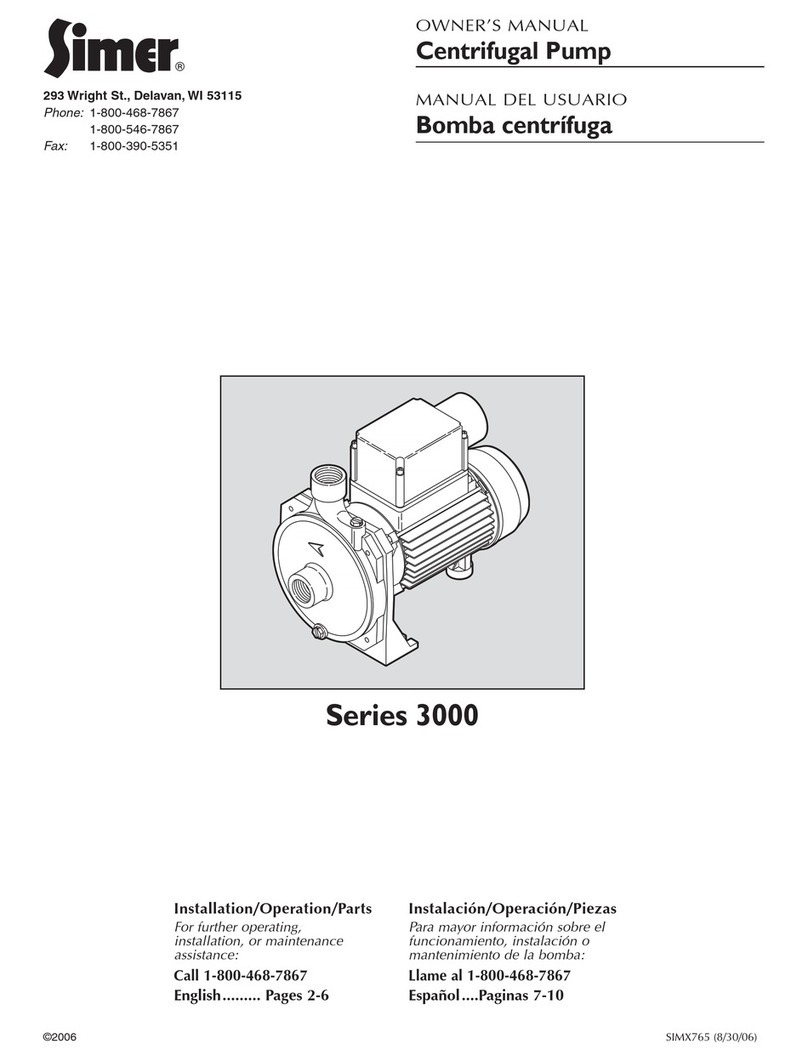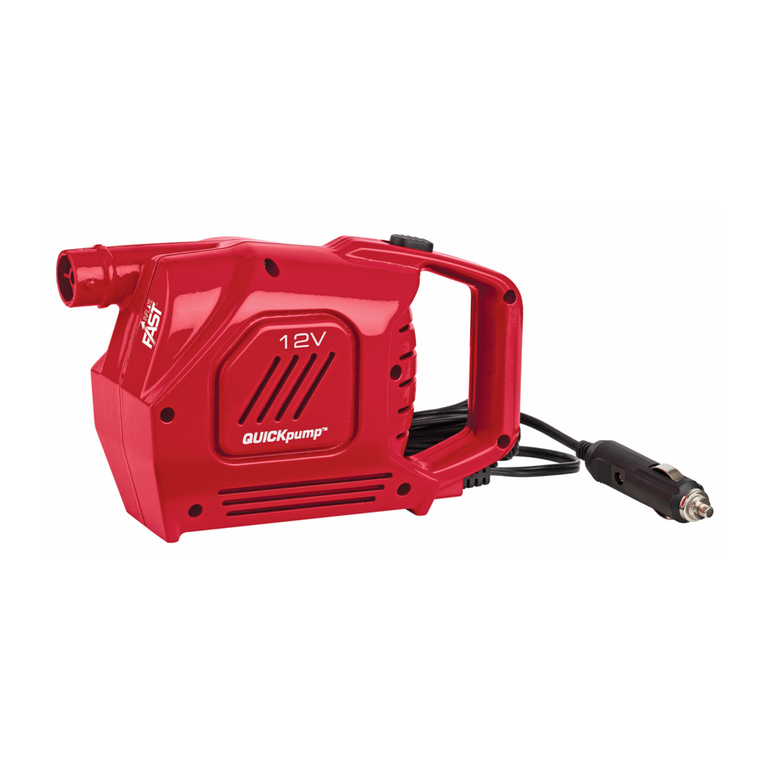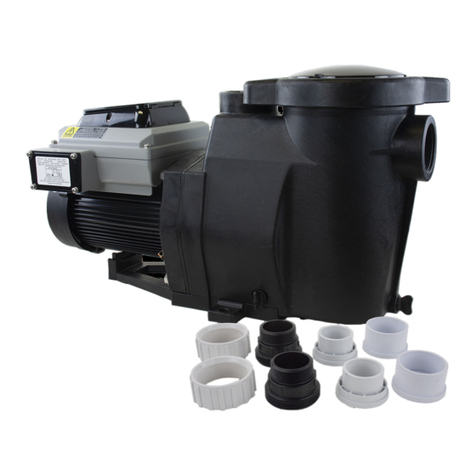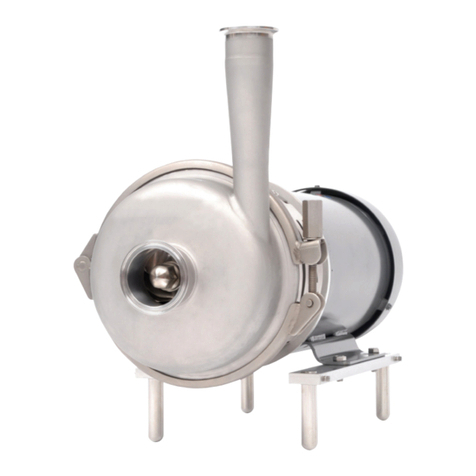JEC JCP Series Installation and operation manual

Contents
Thank you for purchasing a JEC Product!
This manual contains disassembly and assembly instructions, maintenance procedures,
troubleshooting and a complete parts list for all JCP series Centrifugal Pumps designed and
manufactured by JEC Ltd. South Korea.
READ THIS MANUAL carefully to learn how to service these pumps. Failure to do so could
result in person injury or equipment damage.
SAFETY
DO’S AND DON’TS --------------------------------------------------------------------------------- 3
TECHNICAL INFORMATION
THECHNICAL DATA -------------------------------------------------------------------------------- 4
INSTALLATION
INSTALLATION ------------------------------------------------------------------------------------- 5
START UP ------------------------------------------------------------------------------------------- 5
MAINTENANCE
DISASSEMBLY -------------------------------------------------------------------------------------- 6
INSPECTION ---------------------------------------------------------------------------------------- 8
ASSEMBLY-------------------------------------------------------------------------------------------- 9
TROUBLESHOOTING
TROUBLESHOOTING ------------------------------------------------------------------------------- 11
PARTS LIST
PARTS LIST ----------------------------------------------------------------------------------------- 12
CROSS SECTIONAL VIEW ------------------------------------------------------------------------- 13
2

SAFETY
DO’S & DON’TS
DO read and understand these instructions before installing or using the pump.
DO use JES spare parts when replacing a component of the pump.
DO NOT services the pump while it is running.
DO NOT place the pump in an application where the service ratings are exceed.
DO NOT modifies the pump. Modifying the pump creates unsafe conditions and voids all
warranties.
SAFETY PRECAUTIONS WHEN INSTALLING PUMP
DO use an authorized electrician when connecting the pump.
DO observe the mechanical limits of the pump (refer to the pump performance sheet).
DO install a throttling valve in the discharge line.
DO NOT installs a throttling valve in the suction line.
SAFETY PRECAUTIONS WHEN OPERATING PUMP
DO NOT touches the pump or the lines when pumping hot fluids or when performing Clean
In Place (CIP) procedures.
DO NOT run the pump with BOTH the suction inlet and discharge outlet blocked. Running
the pump with the inlet the blocked will cause serious damage to the pump.
DO NOT checks pump rotation with liquid in the pump.
DO NOT runs the pump with the impeller rotating in the wrong direction. Rotating the
impeller in the wrong direction may cause damage to the pump.
DO NOT operates the pump without the motor shroud.
SAFATY PRECAUTIONS WHEN SERVICING PUMP
DO ensure the pump is cool to touch before performing service.
DO relieve all pressure and drain all fluids from pump and connected piping before
performing service.
DO ENSURE POWER TO THE UNIT HAS BEEN UNPLUGGED PRIOR TO
PERFORMING ANY PUMP MAINTENANCE OR CLEANING.
DO exercise caution and wear protective clothing when using lye or acid for cleaning.
3

TECHNICAL INFORMATION
TECHNICAL DATA
SPECIFICATIONS
Maximum Inlet Pressure -------------------------------------------- 10 bar (1,000 kpa, 145 PSI)
Maximum Discharge Pressure -------------------------------------- 10 bar (1,000 kpa, 145 PSI)
Maximum Flow rate ---------------------------------------------------- 100 m3/hr (440 US GPM)
Temperature Range ---------------------------------------------- -10 C to 150 C (14 F to 302 F)
Noise Level ------------------------------------------------------------------------------- 60 ~ 80 db
MATERIALS
Product Wetted Parts --------------------------------------------------------- AISI 316 (standard)
Product Wetted Elastomers ------------------------------------------------------ EPDM (standard)
Alternative Seals ----------------------- NBR, VITON, PTFE Encapsulated, Perfluoro elastomer
SHAFT SEALS
Mechanical Seal type ------------------------------------------------- Single and Double Flushed
Maximum Flushing Water Pressure ----------------------------------- Maximum 1 bar (14 PSI)
Flushing Water Consumption ------------------ 0.25~0.5 liter/min (30~60 cubic inches/min)
Stationary Seal ring Material ------------------------------------------------------ Silicone Carbide
Rotating Seal Ring Material ------------------Antimony Carbon (standard) or Silicone Carbide
O-ring material --------------------------------------------------------------------- EPDM (standard)
MOTOR INFORMATION
Uses standard IEC B3 B5 flanged motors.
Options include drip proof, explosion proof motors.
VOLTAGE AND FREQUENCY
3 phase, 50Hz, 220/415 VAC ---------------------------------------------------- 1,500/3,000 RPM
3 phase, 60Hz, 220/440 VAC ---------------------------------------------------- 1,800/3,600 RPM
4

INSTALLATION
INSTALLATION
1. Mounting surface should be flat and level.
2. The suction line should be kept as short as possible and present minimum friction
loss.
3. Suction and discharge lines must be fully supported and installed so that no
expansion or shock forces act on the pump which could lead to distortion.
4. Ensure sufficient clearance around the motor and pump.
START UP
1. Before connecting the suction and discharge pipe work the entire system must be
thoroughly cleaned to prevent damage from welding, grinding and other residues.
2. Before starting, bump the motor to check if the motor fan is rotating clockwise when
seen from the motor back. If the motor fan cannot be seen, look through the pump
case adaptor after take off motor shroud. (Bump means to momentarily apply power
to the motor and then immediately remove power).
3. Direction of rotation must only be checked with a completely filled system. Where
double mechanical shaft seals are installed the flush supply must be operational. Any
dry running will result in seal damage.
4. The motor rating plate should be checked to ensure that it is in accordance with the
available electrical supply. It is essential that the full load current is not exceeded to
prevent motor overload.
5. Before start up any safety guards required by local statutory regulations should be
fitted.
Pay attention to circumstances that could indicate pump cavitations:
1. Low pressure in the suction line due to line restrictions.
2. Air in the suction inlet line.
3. Pumping temperature is too high.
4. Pump is over sized.
5

MAINTENANCE
DISASSEMBLY
REMOVING PUMP PARTS
Prior to removal of pump, the shut-off valves in the suction and discharge pipe work must be
closed. If there is any risk that product many harden, crystallize or freeze in the pump it
should be thoroughly drained and cleaned immediately after use. Similar attention must
apply to the seal flush system. Remove power before servicing to prevent unintended startof
the pump by an authorized electrician.
1. Remove front cover (2) by a tool as shown after removing handles (7). After removing
front cover, remove impeller cap nut (4) from stub shaft by wrench and impeller (5).
Wrench size is 22mm.
2. Remove stationary seal (29) and case O-ring (24) from the shaft.
Front Loading Stationary seal Case O-ring Seal Pin
6

3. Remove rotating seal (30) ring from the impeller backside
Rotating seal Seal pin
If double seal with flushing is used,
* . Remove case (1) from frame (6) by removing four wrench bolts (14) securing case to
frame. Remove seal body on back of casing by removing two screws (34). Remove
stationary seal (27) and o-ring (25) for double seal.
Pin hole
Pin
Flush port
4. If disassembling stub shaft from motor: loosen screws (15) by 5mm Allen wrench (6mm
from 5.5kw motor) remove it from motor shaft after tightened a jack bolt oppositely.
Tightened a jack bolt
Loosen the bolts to disassemble stub shaft.
7

INSPECTION & Replacement
1. Inspect O-rings and seals for reuse. Worn O-rings and seals should be replaced.
2. Inspect seal faces for scoring or cracks. Replace any seal faces that are damaged.
3. Inspect stub shaft and other metal parts for wear or damage.
4. Inspect impeller for damage from cavitations. Cavitations damage appears as pitting
on the impeller surfaces.
ASSEMBLY
PUMP PARTS ASSEMBLY
“JEC pumps must only be operated with genuine JEC spares”.
1. Assemble shaft by loosen screws (15) and slightly tighten jack bolt in stub shaft.
2. Tighten bolts (15) evenly after loosen jack bolt but not more than to allow the stub
shaft to be moved by gently tapping with a rubber or plastic tipped mallet. This will
allow for possible adjustment during setting of impeller clearance.
Loosen jack bolt Tighten bolts
3. Assemble seal body into case by securing two screws. In double seal case must put seal
O-ring into case.
Be sure that seal pins shall be complied to seal pin holes
.
A
Seal Pin
Pin hole
8

3. Assemble case (1) to frame with four screws (14). Assemble O-ring and stationary
seal into case.
Be sure that seal pins shall be complied to seal pin grooves.
Assemble case to frame Front Loading Stationary seal
4. Install rotating seal parts inside back of impeller. Ensure the pin of the rotating seal
ring shall be complied to pin hole.
Pin for seal shall be complied to notch of seal ring.
SETTING IMPELLER CLEARANCES
5. Before set clearance install impeller cap nut (4) on stub shaft after place spring
washer (36) and O-ring (22). Note that impeller cap nut is metric. Wrench size is
22mm and torque need to 21Nm.
9

6. Using a filler gauge set the clearance between impeller back and case (1) to
0.6~0.7mm. Tighten bolts (15) firmly after loosen jack bolt. Place case O-ring (24) in
case and install front cover (2) on case and handles (7) tighten.
Jack bolt Filler gauge
Note) Inspection and maintenance
1. Our JCP series we supply is provided with a seal which has been validated to
demonstrate that there is no migration past the seal under the intended conditions of
use and The European Hygienic Engineering and Design Group (EHEDG) test for
bacterial tightness approves the determining migration past the seal.
2. The seal for JCP series is designed so it is capable of being maintained bacterially tight.
Also, enclosed threads are cleanable and drainable.
3. We recommend inspect and maintenance periodically (at least once in a month) seal
and the enclosed threads. If dust or particle is founded, clean them thoroughly by
brushing or water or replace the seal or the enclosed thread if impossible to be
cleanable.
10

TROUBLESHOOTING
JEC pumps are high-quality products designed for trouble-free operation and long operating
life. However, occasional problems can arise. The troubleshooting chart, figure 4, provides a
means of determining and correcting most of your pump problems. Should problem arise
where the remedies listed in the troubleshooting chart do not cure the situation, pump
cavitations, such as noisy operation, insufficient discharge and vibration, can result when a
pump is not properly applied. If these conditions are present, check the system and
re-evaluate the application.
Trouble Problem Cause Remedy
1. No or insufficient a. Pump speed too slow. a. Correct wrong or poor electrical connections.
discharge
b. Wrong direction of rotation. b. Reverse a three-phase motor by switching
any two of the three power leads at the
motor or controller.
c. Closed valve, obstruction c. Open valve and clear obstruction.
in discharge piping.
d. Impeller diameter too small. d. Replace impeller.
2. Excessive power a. Products viscosity too high. a. Check the application.
consumption b. Impeller contact to case. b. Re-set clearance according to the in these
instructions.
c. High pump capacity. c. Check the application.
d. Bearings are damage. d. Replace bearing.
3. Pump is noisy a. Impeller contact to case. b. Re-set clearance according to the in these
instructions
b. Bearings are damage. b. Replace bearing.
c. NPSHa is too low. c. Check the system and re-evaluate the
application.
d. Pressure loss in suction line d. Check the system and re-evaluate the
too high. application.
e. Pump cavitation. e. See cavitation clause in the start-up section.
f. Solid particles in pump. f. Remove case and check for particles
in the pump.
4. Pump leaks a. O-ring seal is worn or defective. a. Replace O-ring seal.
b. Mechanical seal is worn or b. Replace mechanical seal.
defective.
If assistance is required, please contact your local sales office with the following information:
1. Operating conditions.
2. Accurate description of default.
3. Model of pump and serial number.
4. If possible installations sketch of pump system.
11

PARTS LIST
All orders for repair parts must contain the following.
1. Complete model number (located on nameplate).
2. Pump serial number (located on nameplate).
3. Description and part number from the parts list.
No. Description Q’ty
1 Case 1
2 Front Cover 1
3 Shaft 1
4 Cap nut 1
5 Impeller 1
6 Frame 1
7 Handle 1
8 Stud Bolt 1
9 Nozzle 1
10 Leg Bracket 1
11 Leg Feet 4
12 Leg set Screw 4
13 Hex Bolt 4
14 Wrench Bolt 4
15 Jack Bolt 1
16 Wrench Bolt 4
17 Guard 2
No. Description Q’ty
20 Flush Port 2
21 Cover O-ring 1
22 Cap Nut O-ring 1
23 Impeller O-ring 1
24 Casing O-ring 1
25 O-ring for Flushing 1
26 O-ring for D. Seal 1
27 Single Mech. Seal 1
28 Double Mech. Seal 1
29 Case Seal Ring 1
30 Impeller Seal Ring 1
31 Seal Pin 1
32 Seal Pin 1
33 Seal Pin 1
34 Wrench Bolt 2
35 Flat Washer 2
36 Spring Washer 1
18 Motor Cover 1 37 Name Plate 1
19 Cover Screw 4 38 Rivet 2
12

CROSS SECTIONAL VIEW
13
Table of contents
Popular Water Pump manuals by other brands

ADEO Services
ADEO Services 84267643 Installation and maintenance manual

SELWOOD
SELWOOD D150 OPERATING & SERVICE MANUAL

SFA
SFA Sanipump SLD 700 OPERATING AND INSTALLATION Manual
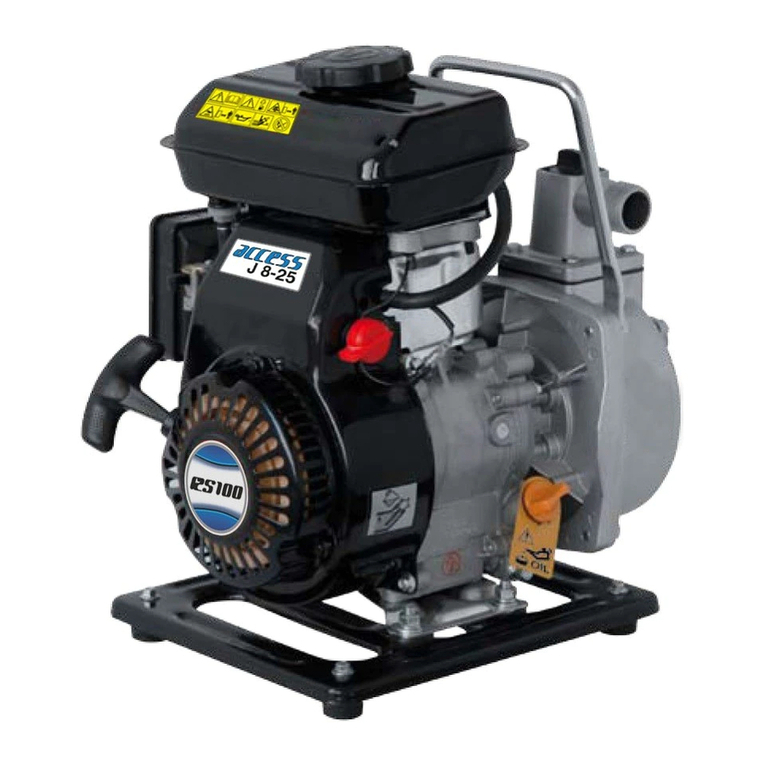
WORMS
WORMS ACCESS j 8-25 Instructions for use

Verderflex
Verderflex Ds500 operating manual
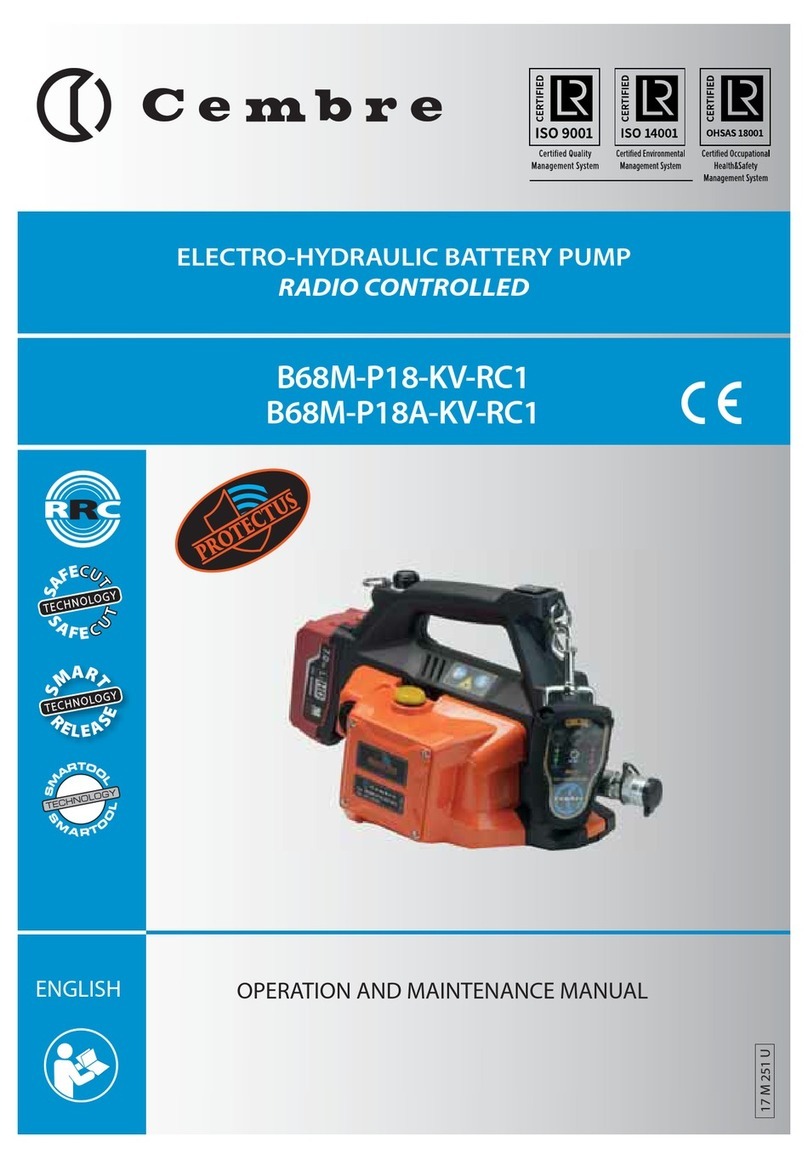
Cembre
Cembre B68M-P18-KV-RC1 Operation and maintenance instruction manual

Einhell Royal
Einhell Royal HWA 810 operating instructions

GORMAN-RUPP
GORMAN-RUPP S Series MAINTENANCE AND REPAIR WITH TROUBLESHOOTING
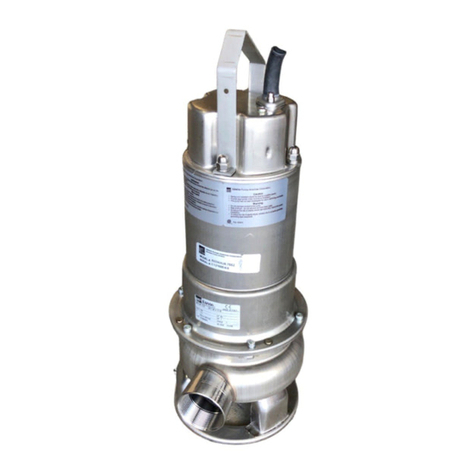
EBARA
EBARA Dominator DWU Operating instructions, installation & maintenance manual

PVR
PVR EU 160 Operating and maintenance instructions

Graco
Graco 24W181 instructions

Liberty Pumps
Liberty Pumps ProVore PRG Series installation manual


